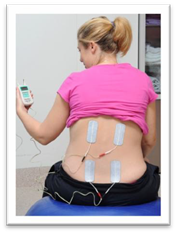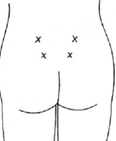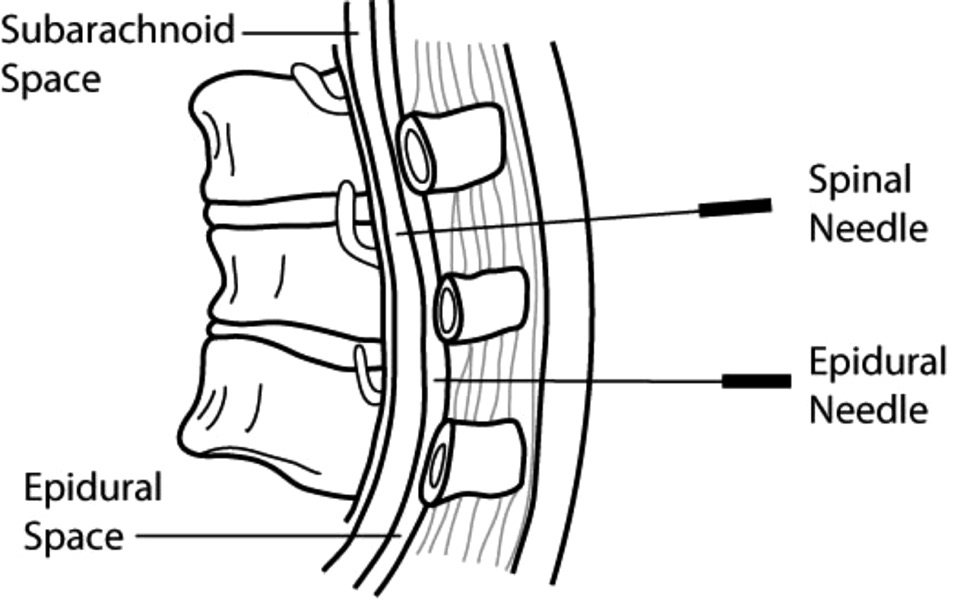Pain relief options Guide
-
Managing pain in labour
Understanding the choices of pain relief are an important part of getting ready for the birth of your baby.
Although having a baby is a natural process, it can cause significant pain and discomfort.
Every woman is different, and every birth experience is unique, so the need for pain relief varies.
During labour, your need for pain relief may change, so it’s important that you are open to learning about different ways to manage pain during labour.
-
Transcutaneous electrical nerve stimulation (TENS)
Using a TENS machine in labour
- Electrodes are taped onto your back and connected by wires to a small battery-powered stimulator.
- With the stimulator, you give yourself small, safe amounts of current through the electrodes.
- You can move around while you use the TENS machine.
How do TENS machines help during labour pain?
TENS is believed to work by stimulating the body to produce more of its own natural painkillers, called endorphins.
- It reduces the number of pain signals that are sent to the brain by the spinal cord.
- TENS has been shown to be most effective if used during the early stages of labour when many women experience lower back pain.
- There are no known side effects for either you or the baby.

More information: Pregnancy, Birth and Baby – TENS (Transcutaneous electrical nerve stimulation)
-
Sterile water injections (SWIs)
How are SWIs given?
- the procedure involves a small amount of sterile water (0.01–0.02 mL) injected under the skin at four locations on the lower back (sacrum)
- the injections cause a brief but intense stinging sensation, that lasts for about 30 seconds and then wears off completely
- to distract from the stinging sensation, the injections are done during a contraction by two midwives.
How can SWIs help during labour?
During labour, SWIs provide effective pain relief for up to 85% of women with back pain and can last for up to two hours.
SWIs have a number of advantages, they:
- often have an immediate effect
- have no effect on the mother's state of consciousness
- have no effect on baby
- do not limit mobility
- do not adversely affect labour progress
- are a simple procedure that can be administered by your midwife and can be repeated as needed.

More information: Pregnancy, Birth and Baby – Non-medical pain relief during labour
-
Nitrous oxide (gas)
How do I use nitrous oxide in labour?
- you control the amount you use
- start breathing on it as soon as you feel a contraction coming on, so you will get the full effect when the pain is at its peak
- avoid use between contractions or for long periods as this can make you feel dizzy.
What is nitrous oxide?
Nitrous oxide is a gas that is mixed with oxygen and administered through a face mask or a mouthpiece held in the mouth.
Nitrous oxide is simple and quick to act and wears off in minutes. It will not take the pain away completely, but it may help.
More information: Pregnancy, Birth and Baby – Gas (Entonox)
-
Morphine
What are morphine injections?
Morphine is a strong pain reliever, usually injected directly your arm or thigh.
- the effect of morphine can last anywhere from two to four hours.
- morphine can make you feel sick, so anti-nausea medications are usually administered at the same time.
What are the possible side effects?
For mother:
- dizziness and nausea
- disorientation and altered perception
- respiratory depression (reduced breathing).
For baby:
- because baby is exposed to the drug via the umbilical cord, it may cause difficulty with breathing at birth, particularly if the baby delivers soon after a morphine injection
- it may also interfere with breastfeeding.
-
Epidurals
Why are epidurals used during labour and birth?
Epidurals are used for vaginal and caesarean births, because they allow the mother to stay awake and alert during the baby’s birth.
What are the advantages of an epidural?
- epidurals are usually a very effective form of pain relief
- epidurals take away the pain of contractions
- epidurals can be effective for hours and can be increased in strength if you need to have an emergency caesarean birth
- in a long labour, an epidural can allow you to sleep during the active stage of labour, saving energy in preparation for pushing in second stage of labour
- if your blood pressure is high, an epidural might be recommended by your doctor.
More information:
What happens when I have an epidural?
Epidural is a local anaesthetic, which is injected into your back (not the spinal cord).
An anaesthetist will put the epidural in. This usually takes about 20 minutes.
- a drip will be put in your hand or arm
- to place the epidural, you will be asked to either sit up or lie on your side
- cold antiseptic solution will be painted onto your lower back to clean the skin
- local anaesthetic will be injected into your back first – this may cause a stinging sensation for a few seconds
- you will feel a pushing sensation in your back while the epidural is inserted
- it is very important that you keep still while the epidural is inserted, to avoid any damage to the nerves in your spine
- the epidural needle is not left in the back - just a thin tube (called an epidural catheter) remains to deliver the epidural medications.



What can I expect for an epidural?
An epidural causes muscle weakness in the legs, so women who have had an epidural in labour are confined to bed.
This also means:
- an epidural can take away the sensation to pass urine so you will need a urinary catheter (a thin tube) to drain your urine
- you will have an IV (intravenous) drip in your hand to give you extra fluids
- a cardiotocography (CTG) machine will continuously monitor the baby’s heartbeat
- your blood pressure will be monitored closely
- in second stage of labour, you may still feel the urge to push, but the sensation is reduced so you may require an assisted delivery for your birth.
Frequently asked questions – epidurals in labour
Will an epidural hurt?
The answer depends on who you ask. Some women describe an epidural placement as creating a bit of discomfort in the area where the back was numbed, and a feeling of pressure as the small tube or catheter was placed.
When might an epidural not be recommended for pain relief?
There are certain situations where an epidural would not be recommended. For example, medical complications, bleeding disorders, infections, history of back surgery.
Discuss any concerns you may have with your midwife or doctor who will make a referral for you to speak to an anaesthetist prior to your birth.
When can I have an epidural?
Typically, epidurals are placed when the cervix is dilated to 4–5 centimetres or more and you are in true active labour. The timing is determined by your unique experience in labour. You will need to discuss this with your midwife or doctor at the time.
Can an epidural slow down my labour?
Yes. An epidural can cause your labour to slow down and make your contractions weaker. If this occurs, you may be given intravenous oxytocin to help speed up labour. The second stage of labour can be prolonged and assisted birth may be required in certain situations.
Can an epidural affect my baby?
Research shows that epidurals do not directly affect your baby. The drugs used in epidurals do cross the placenta but are considered safe and have minimal effect on baby.
What are the risks of an epidural?
Epidurals have been routinely used for many years and are widely accepted as an effective method of pain relief after surgery, during labour and childbirth. However, as with many medical procedures, there are some associated risks that, although small, you should be aware of before deciding whether to have an epidural.
Risks and benefits of epidurals: Queensland Government – Epidural pain relief for your labour
More information: Pregnancy, Birth and Baby – Epidural
Next section: Breastfeeding 101
Pain relief options, 23 Mar 2023, [https://oss-uat.clients.squiz.net/health/children/pregnancy/antenatal-information/pain-relief-options]
This document is uncontrolled when printed. Before using the information in this document you should verify the current content on https://oss-uat.clients.squiz.net/health/children/pregnancy/antenatal-information/pain-relief-options.